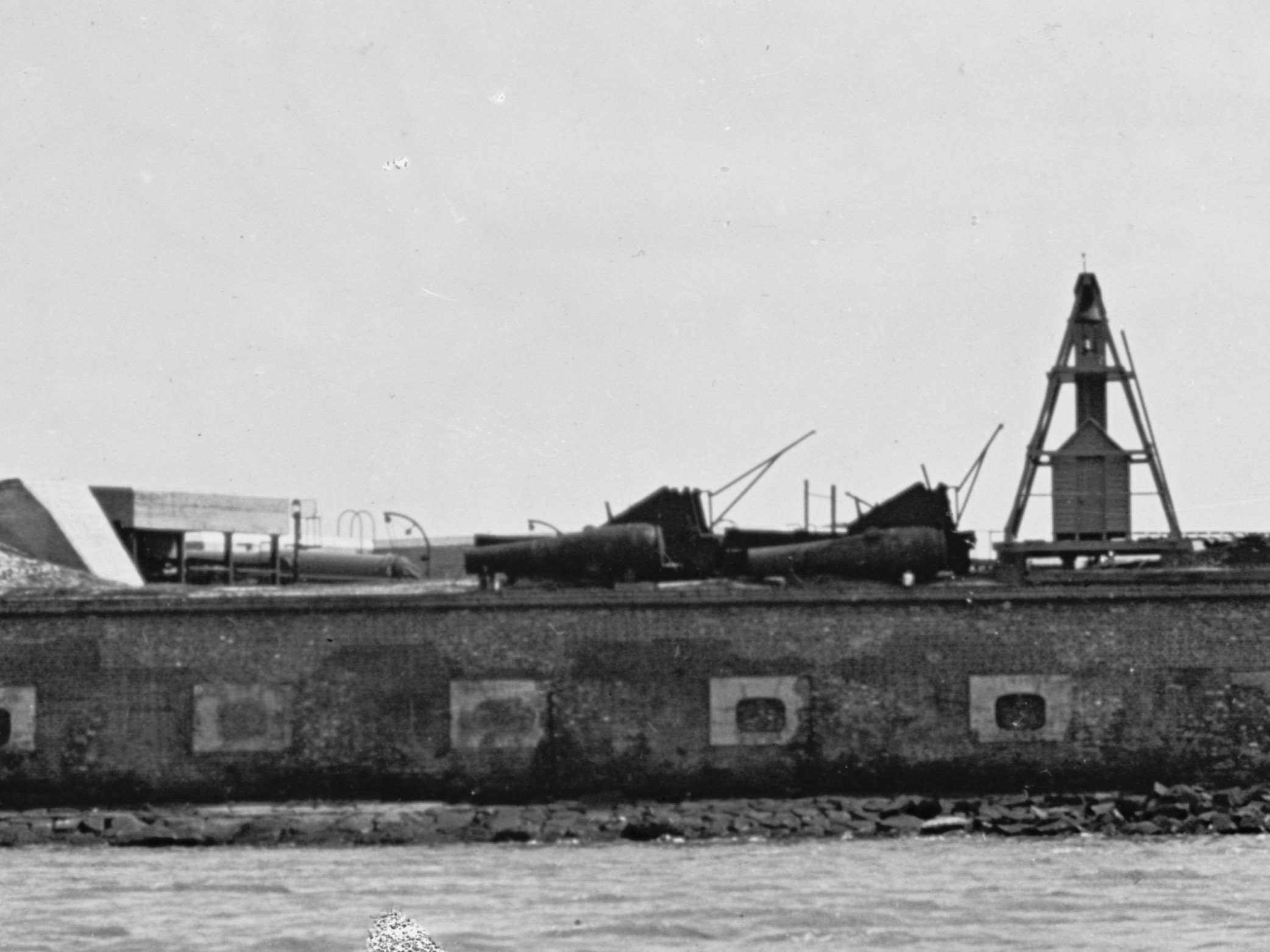The 15-Inch Rodmans of Forts Sumter and Moultrie
Two 15-Inch Rodman Columbiads (Pattern 1861) on display at Fort Moultrie near Charleston, SC
These four 15-Inch Rodmans were mentioned in a previous post about all of the Columbiads on display in Charleston: The Columbiads of Charleston.
Four 15-Inch Rodman Columbiads (Pattern 1861) may be found in the Charleston, South Carolina area at Forts Moultrie and Sumter.
Forts Sumter and Moultrie in Charleston, South Carolina were partially rebuilt in the 1870s and rearmed with a combination of Rodman Smoothbores and Parrott Rifles. The largest of the cannons brought during this time were the gigantic 15-Inch Rodman guns - the barrels alone weighing 50,000 pounds. The cannon could throw a 440 pound shot or 350 pound shell. By comparison, the 10-Inch Columbiad, one of the largest cannons before the war and the largest type regularly available to the Confederates during the war, only fired a roughly 128 pound projectile. The 15-Inch Rodman was used to arm Federal fortifications during the war, famously including the “Lincoln Gun” at Fort Monroe.
As I have previously described, these 15-Inch cannons were made possible due to the innovations of US Army Officer Thomas Jackson Rodman.. The Model 1844 10-Inch Columbiads had not been as strong as desired. Beginning his research and experiments in the late 1840s, Rodman worked out that the traditional manner of casting a gun solid, allowing it to cool from the outside in, and then boring out the barrel would not work beyond a certain size tube. As such a gun cooled, the outside was the first to cool, and it would contract slightly as it did so, but as metal further and further toward the center began to cool and harden, it would contract beneath metal that had already contracted. Rodman’s innovation was to cast the guns with a tube going into the area where the bore would eventually be made. Into this tube was run water to cool the cast gun from the inside while fires burned on the outside of the casting. Cooling from the inside out, the metal contracted onto successive layers of already contracted metal - strengthening the cannon as it cooled.
While the 15-inch Rodmans are post-war additions to Forts Moultrie and Sumter, the US Navy used similar 15-inch guns in their monitors at Charleston. The Navy model, though in a similar shape to the Dahlgrens, was cast using Rodman’s hollow-casting techniques. The 15-inch in USN service proved quite capable of quickly cracking the armor of Confederate ironclads.
15-Inch Rodman projectile in the visitor’s center at Fort Moultrie.
According to Mike Ryan’s excellent “The Historic Guns of Forts Sumter and Moultrie”, the two cannons at Moultrie were cast in 1866 (Registry Number 21) and 1867 (Registry Number 24) at Scott Foundry. The two 15-inch Rodmans at Fort Sumter were both cast in 1867 and bear the registry numbers of 22 and 23. Thus the two forts preserve 15-inch Rodmans #21-24 from Scott Foundry. All were inspected by William Prince.
Fort Moultrie’s 15-Inch Rodmans have been displayed since 1976 on reproduction carriages, while Fort Sumter’s rest upon the ground. They seem to have been dismounted when Battery Huger was constructed in 1898. A photo taken circa 1901 shows the two huge Rodmans sitting beside their carriages near the edge of the Fort.
Fort Sumter circa 1901 - Library of Congress Photo https://www.loc.gov/pictures/item/2016800277/
Detail of the above photo showing the two 15-inch Rodmans dismounted beside their carriages. One of the 12-inch breechloaders of Battery Huger may also be seen in the photo at left..
Library of Congress Photo showing one of the 15-Inch Rodmans as displayed in 1958. The rifled and banded 10-Inch Model 1844 Columbiad may also be seen in this photo. https://www.loc.gov/pictures/item/sc0247.photos.149286p/
The two 15-Inch Rodmans (with a Model 1844 8-Inch Columbiad between them) at Fort Sumter
Moultrie’s Rodmans viewed from the sea face.






















